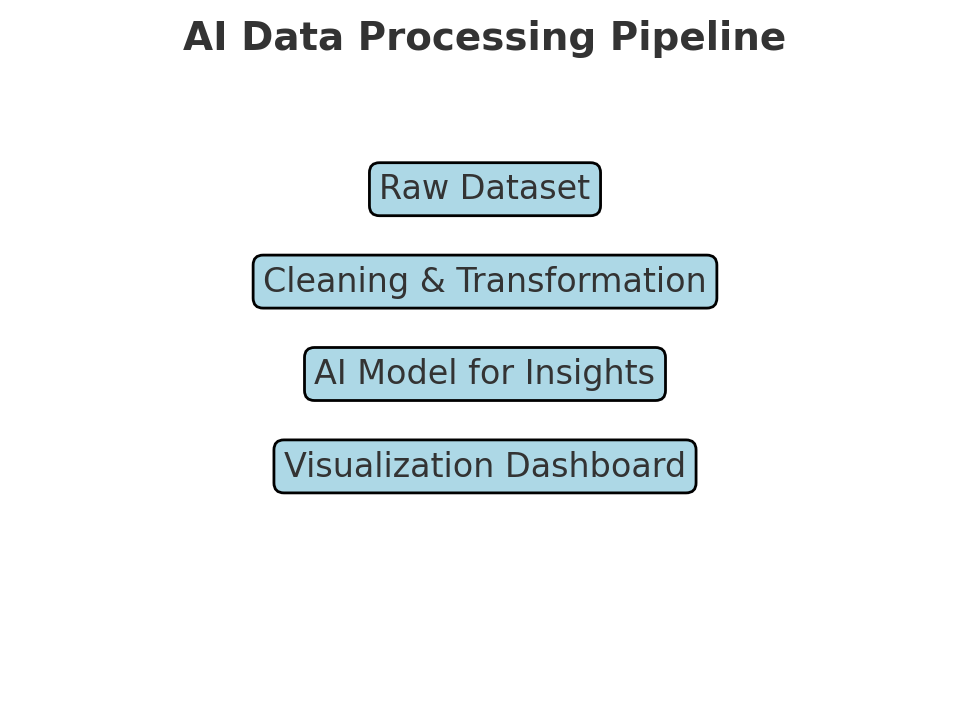Automating Data Tasks with AI
Data is at the heart of modern organizations, but manual data processing is slow, error-prone, and expensive. AI enables automation across the full pipeline: collection, cleaning, transformation, visualization, and analysis.
Common Data Automation Tasks:
- Data cleaning: AI detects duplicates, corrects typos, standardizes formats.
- Data integration: Merge multiple sources into a unified dataset.
- Insight extraction: Identify patterns, anomalies, or correlations without manual coding.
- Visualization: Generate charts, dashboards, and natural language summaries automatically.
Case Example:
A retail company used AI to process 2 million transaction rows weekly. Instead of analysts manually cleaning and categorizing, an AI pipeline flagged outliers, corrected 90% of errors, and generated trend dashboards. Analysts shifted from cleaning to strategic forecasting.
AI for Real-Time Analysis:
Traditional BI tools rely on static dashboards. With AI, streaming data can be analyzed in real-time, giving proactive alerts (e.g., unusual spending patterns, sudden customer churn spikes).
Tools You Should Know:
- Google BigQuery with Vertex AI: Automated anomaly detection in large datasets.
- Snowflake + AI integration: Built-in data cleaning and enrichment.
- Tableau GPT: Conversational queries to build dashboards instantly.
- LangChain + PandasAI: Automating advanced analysis with LLMs.
Risks and Challenges:
- Garbage in, garbage out – bad input data still breaks models.
- Over-reliance on black-box AI may hide reasoning behind insights.
- Data privacy concerns with cloud-based AI APIs.
When applied responsibly, AI automation shifts data teams from janitorial work to high-value strategic analysis.
